Comparative and International Education: An Introduction to Theory, Method, and Practice
Autor Professor David Phillips, Dr Michele Schweisfurthen Limba Engleză Paperback – 12 mar 2014
| Toate formatele și edițiile | Preț | Express |
|---|---|---|
| Paperback (1) | 218.23 lei 3-5 săpt. | +43.60 lei 7-11 zile |
| Bloomsbury Publishing – 12 mar 2014 | 218.23 lei 3-5 săpt. | +43.60 lei 7-11 zile |
| Hardback (1) | 890.72 lei 6-8 săpt. | |
| Bloomsbury Publishing – 12 mar 2014 | 890.72 lei 6-8 săpt. |
Preț: 218.23 lei
Preț vechi: 262.83 lei
-17% Nou
Puncte Express: 327
Preț estimativ în valută:
41.76€ • 45.35$ • 35.08£
41.76€ • 45.35$ • 35.08£
Carte disponibilă
Livrare economică 01-15 aprilie
Livrare express 18-22 martie pentru 53.59 lei
Preluare comenzi: 021 569.72.76
Specificații
ISBN-13: 9781441176486
ISBN-10: 1441176489
Pagini: 240
Ilustrații: 19 illus
Dimensiuni: 156 x 234 x 15 mm
Greutate: 0.37 kg
Ediția:Revised
Editura: Bloomsbury Publishing
Colecția Bloomsbury Academic
Locul publicării:London, United Kingdom
ISBN-10: 1441176489
Pagini: 240
Ilustrații: 19 illus
Dimensiuni: 156 x 234 x 15 mm
Greutate: 0.37 kg
Ediția:Revised
Editura: Bloomsbury Publishing
Colecția Bloomsbury Academic
Locul publicării:London, United Kingdom
Caracteristici
Includes additional information on learner-centred pedagogy and internationalization of higher education
Notă biografică
David Phillips is Emeritus Professor of Comparative Education at the University of Oxford, UK, and an Emeritus Fellow of St Edmund Hall, Oxford, UK.Michele Schweisfurth is Professor of Comparative and International Education at the University of Glasgow, UK. She is also Editor of the journal Comparative Education and was Chair of the British Association for International and Comparative Education (2010-12).
Cuprins
AcknowledgementsForeword to the 1st Edition, Erwin H. EpsteinForeword to the 2nd Edition, Jeremy RappleyePreface to the 2nd EditionIntroduction1. Making Comparisons2. How Comparative Education has Developed3. Policy Transfer4. International Education: Meanings, Practice, and Research5. Education and National Development: An Introduction to Key Ideas and Questions6. Comparative Education: Method7. Researching Education and Development: Perspectives, Practicalities, and Ethics8. Comparative Education Research: Survey Outcomes and Their Uses9. Outcomes of Comparative Education: Selected ThemesConclusionsReferencesIndex
Recenzii
This valuable, updated second edition of Comparative and International Education: An Introduction to Theory, Method and Practice provides a comprehensive and in-depth introduction to the evolving field of comparative and international education ... [This book] is highly recommended for educational practitioners and scholars (from both inside and outside the field of comparative and international education) who seek a better understanding of the field. This book will also be highly useful in providing a global framework for education students and early-stage scholars new to this field.
[Comparative and International Education, 1st edition] is very approachable and clearly written and yet manages to address major features a beginning comparative educator would need to learn about the field...I would recommend the text for an initial comparative/international education course.
A must-read for those interested in the cultural history of comparative education, the complexities of studying a human enterprise that is in constant change, and the societal implications of scholars' conclusions. Phillips and Schweisfurth build a strong foundation of theory for the practice needed for learning and teaching in a dynamic educational future.
Both students and teachers of comparative and international education will welcome this revised and updated version of what has, rightly, become a core book in the field. In providing this concise, balanced and highly readable overview the authors have made a valuable contribution to an increasingly important area of study.
An excellent book for students of comparative and international education to indulge in. It leaves the reader with a thorough insight into what comparative education is all about... and provides readers with a firm foundation for further absorption into the many aspects of the field. It is a pleasure also to recommend the book as a course book for comparative education courses outside the English-speaking world.
Reading [Comparative and International Education, 1st edition] will provide you with a solid grounding in the principles of comparative and international education, and will equip you with a better understanding of the theory and practice that lies behind these terms. It is an in-depth and specialised text suitable for education professionals.
Comparative and International Education: An Introduction to Theory, Method, and Practice, now in its second edition, continues to live up to its name ... New directions and research foci are couched within a succinct and clear explication of the fundamentals of comparative research. Discussions are presented in an easily readable yet thought-provoking way ... Education students, researchers, seasoned teachers, and the growing community of users and producers of comparative studies will find in this book an excellent vademecum. The authors sincerely deserve to be commended for writing it.
No one should embark on comparative or international study of education without reading - and using - this book. It is not only an essential source, but also a rich and erudite journey through a range of possibilities for comparison. Whether post-colonialism or test results, development or human rights, pedagogy or global citizenship, the book raises critical questions of why and how to research across cultures and contexts. This new edition continues to provide such critical insights while addressing new challenges posed by global communications and policy transfer.
Comparative and International Education is a refreshing and authoritative text covering the history, methods, theory, and current developments of the field. This book provides a solid grounding for new scholars of comparative and international education, as well as for anyone involved in educational research in international contexts. The authors present concise chapters that cover a complex landscape, while also raising important questions that invite discussion and debate. The inclusion of a chapter on policy transfer and borrowing in this second edition rounds out the volume, making it an even stronger foundational text for the field.
David Phillips and Michele Schweisfurth should be commended for this engaging introduction to comparative and international education. The comprehensive chapters on history, method, and competing perspectives in the field are enhanced by their discussion of enduring themes, such as policy transfer, pedagogy, and post-conflict education. Throughout, the authors emphasize the importance of context in single and multiple country studies and the explanatory potential of comparison in theoretical and applied research.
Good highlight on some of the core contents and methods used in comparative and international education.
[Comparative and International Education, 1st edition] is very approachable and clearly written and yet manages to address major features a beginning comparative educator would need to learn about the field...I would recommend the text for an initial comparative/international education course.
A must-read for those interested in the cultural history of comparative education, the complexities of studying a human enterprise that is in constant change, and the societal implications of scholars' conclusions. Phillips and Schweisfurth build a strong foundation of theory for the practice needed for learning and teaching in a dynamic educational future.
Both students and teachers of comparative and international education will welcome this revised and updated version of what has, rightly, become a core book in the field. In providing this concise, balanced and highly readable overview the authors have made a valuable contribution to an increasingly important area of study.
An excellent book for students of comparative and international education to indulge in. It leaves the reader with a thorough insight into what comparative education is all about... and provides readers with a firm foundation for further absorption into the many aspects of the field. It is a pleasure also to recommend the book as a course book for comparative education courses outside the English-speaking world.
Reading [Comparative and International Education, 1st edition] will provide you with a solid grounding in the principles of comparative and international education, and will equip you with a better understanding of the theory and practice that lies behind these terms. It is an in-depth and specialised text suitable for education professionals.
Comparative and International Education: An Introduction to Theory, Method, and Practice, now in its second edition, continues to live up to its name ... New directions and research foci are couched within a succinct and clear explication of the fundamentals of comparative research. Discussions are presented in an easily readable yet thought-provoking way ... Education students, researchers, seasoned teachers, and the growing community of users and producers of comparative studies will find in this book an excellent vademecum. The authors sincerely deserve to be commended for writing it.
No one should embark on comparative or international study of education without reading - and using - this book. It is not only an essential source, but also a rich and erudite journey through a range of possibilities for comparison. Whether post-colonialism or test results, development or human rights, pedagogy or global citizenship, the book raises critical questions of why and how to research across cultures and contexts. This new edition continues to provide such critical insights while addressing new challenges posed by global communications and policy transfer.
Comparative and International Education is a refreshing and authoritative text covering the history, methods, theory, and current developments of the field. This book provides a solid grounding for new scholars of comparative and international education, as well as for anyone involved in educational research in international contexts. The authors present concise chapters that cover a complex landscape, while also raising important questions that invite discussion and debate. The inclusion of a chapter on policy transfer and borrowing in this second edition rounds out the volume, making it an even stronger foundational text for the field.
David Phillips and Michele Schweisfurth should be commended for this engaging introduction to comparative and international education. The comprehensive chapters on history, method, and competing perspectives in the field are enhanced by their discussion of enduring themes, such as policy transfer, pedagogy, and post-conflict education. Throughout, the authors emphasize the importance of context in single and multiple country studies and the explanatory potential of comparison in theoretical and applied research.
Good highlight on some of the core contents and methods used in comparative and international education.
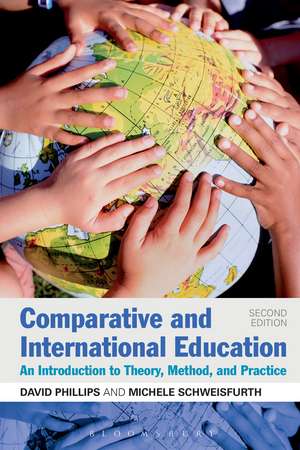
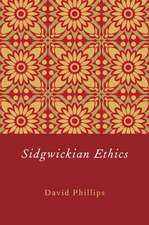



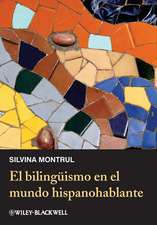

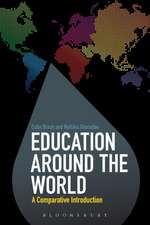


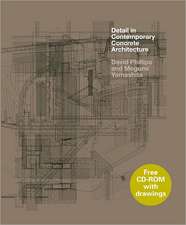
![Detail in Contemporary Residential Architecture 2 [With CDROM]: Fashion, Interiors, Art](https://i0.books-express.ro/bt/9781780671758/detail-in-contemporary-residential-architecture-2-with-cdrom.jpg)
